Accepted Scientific Name: Sclerocactus glaucus (K.Schum.) L.D.Benson
Cact. Succ. J. (Los Angeles) 38: 53. 1966
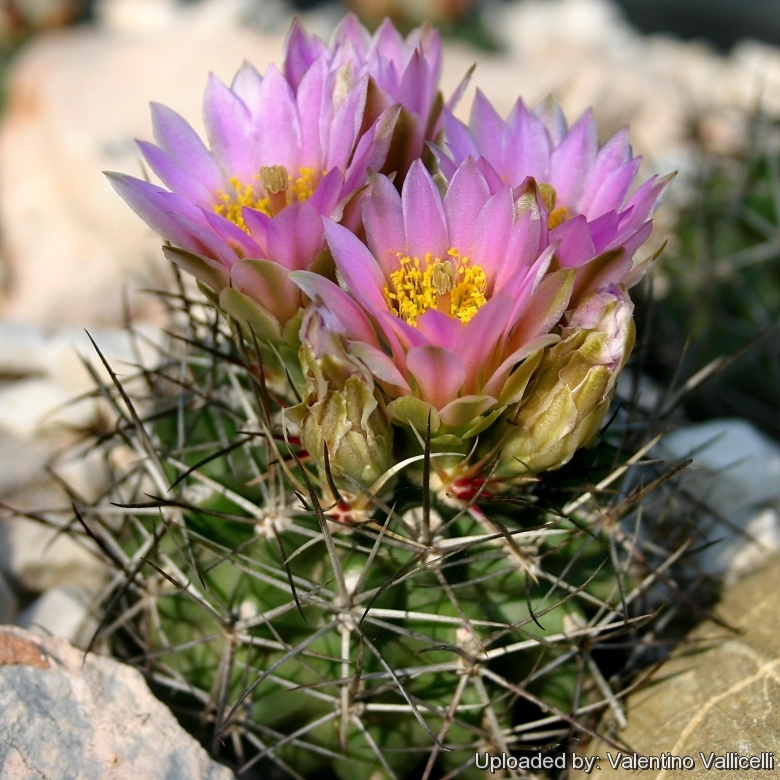
Sclerocactus glaucus '' Debeque form '' Photo by: Valentino Vallicelli
(Field number: SB 1749 De Beque, Garfield County, Colorado, USA) Grown out of doors in the rock garden.
This species does better in the garden than in the green house; no problem for frost, rain and very humid winter season. Resistant till -20° C.
Origin and Habitat: De Beque, Garfield County, Colorado, USA.
Altitude: Elevation ranges from 1300 to 1600 meters above sea level.
Habitat: It is found scattered on gravely or rocky soils on hills, riverside and mesas of varying exposures on Salt-Desert/Grassland sites, occasionally on clayey plains. It is more abundant on south-facing exposures, and on slopes to about 5-30 percent grade.
Synonyms:
See all synonyms of Sclerocactus glaucus
Common Names include:
ENGLISH: Uinta Basin Hookless Cactus, Grand Mesa Purpus Cactus
Description: Sclerocactus glaucusSN|13861]]SN|13861]] is a ball cactus with a squat, ovoid or globular shape. Single or clumping, in groups of up to 9 green or powdery blue coloured stems, like the scientific name, They have 8-15 ribs and the rib is sometime tuberculous 4 to 30 cm tall, 4 to 9 cm in diameter.
Spines: (0 or) 1 to 3 generally characteristic unhooked central spines, the lower ones brown, the upper ones white 1-3 cm long,; 6 to 8 radials, 5 mm long. Some specimens lack central spines or have central spines which are hooked. Red nectar glands are found above each areole.
Roots: Taproots much branched.
Flowers: Beautiful purplish-red flowers Purple or pink flowers, 4-5 cm in diameter, 3-4 cm long.
NOTE: The "Debeque form" has tall larger blue body with stiff spines. It grows in northern edge of distribution for this species.
Subspecies, varieties, forms and cultivars of plants belonging to the Sclerocactus glaucus group
 Sclerocactus franklinii J. W. Evans: is s local form of Sclerocactus glaucus, but not sufficiently distinct to deserve its own formal status. Distribution: Mesa and Delta County, Colorado.
Sclerocactus franklinii J. W. Evans: is s local form of Sclerocactus glaucus, but not sufficiently distinct to deserve its own formal status. Distribution: Mesa and Delta County, Colorado.- Sclerocactus glaucus (K.Schum.) L.D.Benson: Ball-shaped cactus, single or clumping. Stems green or powdery blue coloured 4 to 30 cm tall, 4 to 9 cm in diameter. Central spines unhooked, the lower ones brown, the upper ones white 1-3 cm long, 6 to 8 radials, 5 mm long. Flowersl purplish-red or pink.
 Sclerocactus glaucus '' Debeque form '' (K.Schum.) L.D.Benson: It has tall larger blue body with stiff spines. It grows in northern edge of distribution for this species.
Sclerocactus glaucus '' Debeque form '' (K.Schum.) L.D.Benson: It has tall larger blue body with stiff spines. It grows in northern edge of distribution for this species. Sclerocactus glaucus f. cristata hort.: Crested form easily recognizable for the characteristic unhooked central spines.
Sclerocactus glaucus f. cristata hort.: Crested form easily recognizable for the characteristic unhooked central spines.- Sclerocactus glaucus subs. wetlandicus var. ilseae (Hochstätter) Hochstätter
 Sclerocactus wetlandicus Hochstätter: Morphologically very similar to Sclerocactus glaucus, but the two populations are geographically separated.
Sclerocactus wetlandicus Hochstätter: Morphologically very similar to Sclerocactus glaucus, but the two populations are geographically separated. Sclerocactus wetlandicus f. cristata hort.: Crested form easily with unhooked central spines. Several clones do exist.
Sclerocactus wetlandicus f. cristata hort.: Crested form easily with unhooked central spines. Several clones do exist.
Bibliography: Major references and further lectures
1) Edward Anderson “The Cactus family” Timber Press, Incorporated, 2001
2) James Cullen, Sabina G. Knees, H. Suzanne Cubey "The European Garden Flora Flowering Plants: A Manual for the Identification of Plants Cultivated in Europe, Both Out-of-Doors and Under Glass" Cambridge University Press, 11/Aug/2011
3) David R Hunt; Nigel P Taylor; Graham Charles; International Cactaceae Systematics Group. "The New Cactus Lexicon" dh books, 2006
4) Urs Eggli, Leonard E. Newton: “Etymological Dictionary of Succulent Plant Names.” Birkhäuser 2004
5) Lyman David Benson “The Cacti of the United States and Canada” Stanford University Press, 1982
6) Butterworth, C. & Porter, J.M. 2013. Sclerocactus glaucus. In: IUCN 2013. "IUCN Red List of Threatened Species." Version 2013.2. <www.iucnredlist.org>. Downloaded on 04 December 2013.
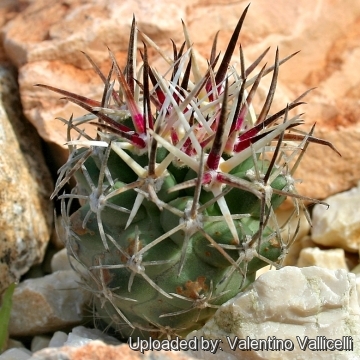 Sclerocactus glaucus '' Debeque form '' Photo by: Valentino Vallicelli
Sclerocactus glaucus '' Debeque form '' Photo by: Valentino Vallicelli Sclerocactus glaucus '' Debeque form '' Photo by: Valentino Vallicelli
Sclerocactus glaucus '' Debeque form '' Photo by: Valentino Vallicelli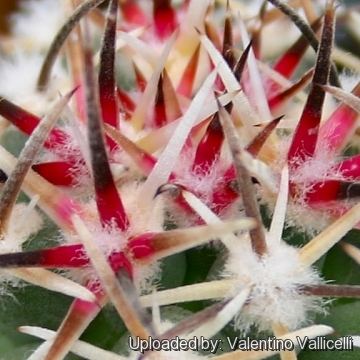 The new pubescent spines are astonishing. Photo by: Valentino Vallicelli
The new pubescent spines are astonishing. Photo by: Valentino Vallicelli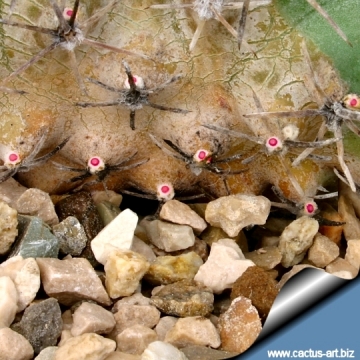 The basal areole have bright red nectaries. Photo by: Cactus Art
The basal areole have bright red nectaries. Photo by: Cactus Art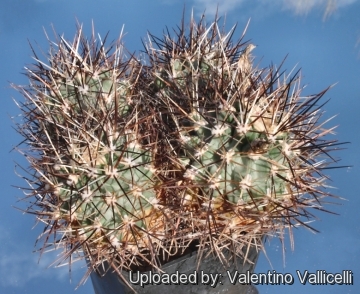 Winter ( Dry resting phase) Photo by: Valentino Vallicelli
Winter ( Dry resting phase) Photo by: Valentino Vallicelli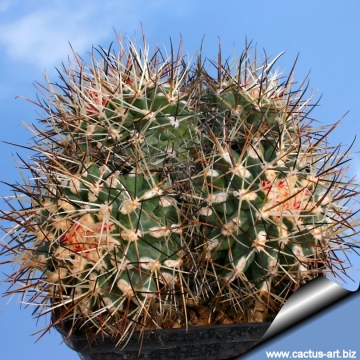 Summer (Active growing phase) Photo by: Cactus Art
Summer (Active growing phase) Photo by: Cactus Art A nectar gland. Photo by: Cactus Art
A nectar gland. Photo by: Cactus Art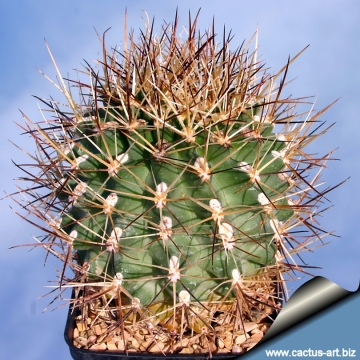 Sclerocactus glaucus '' Debeque form '' Photo by: Cactus Art
Sclerocactus glaucus '' Debeque form '' Photo by: Cactus ArtCultivation and Propagation: This plant is very rare in cultivation, it is difficult to grow on its own roots and to propagate. Mature individuals easily rot and die especially after planting. The seeds germinate with extreme difficulty and a low rate of success, seedlings do not do well either, and more die each year. Sclerocactus glaucusSN|13861]]SN|13861]] '' Debeque form '' is extremely xerophytic and adapted to very dry soils, but plants grafted on hardy stock (Opuntia humifusaSN|11629]]SN|11629]], Echinocereus triglochidiatusSN|10576]]SN|10576]] etc...) are relatively easy to grow and no special skill is required, they can stay in a non heated green house. (min tem -20°C) ... This interesting cactus, continues to be a particular prize among specialist collectors.
Propagation: Seeds are extremely difficult to germinate (only 2-3 percent of seeds germinate). The germination is really difficult and if some seedling finally sprout, as they start to grows they disappear one by one. Grafting is often used to speed growth rate and to create a back-up for plants in collection.
Your Photos
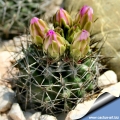
by Cactus Art
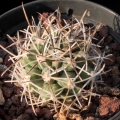
by Valentino Vallicelli
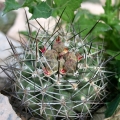
by Valentino Vallicelli





















